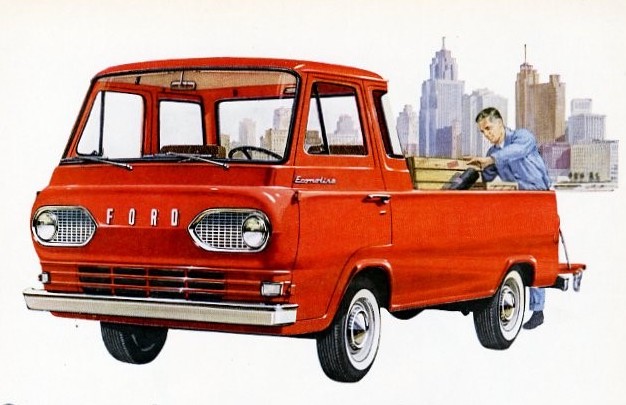
Strange Tale Of The Ford Econoline Pickup
Right now Ford is scrambling to develop an all-electric pickup to stay competitive and keep its F-150 as the best-selling truck. In the early 1960s, Ford also was scrambling to remain number one in the pickup segment with three different kinds of pickups. Of those three the Econoline pickup was like nothing any American manufacturer ever produced.
When Volkswagen started importing its bus into the US in the mid-1950s Ford, Chrysler, and GM all took notice. They each began developing “forward control” vans to compete. As with VW, all three used the drivetrains from its compact cars for power. Chevy did a variation of the Corvair in 1961, Ford an offshoot of its Falcon also in 1961, and by 1964 Dodge had the A-100.
What Could Go Wrong?
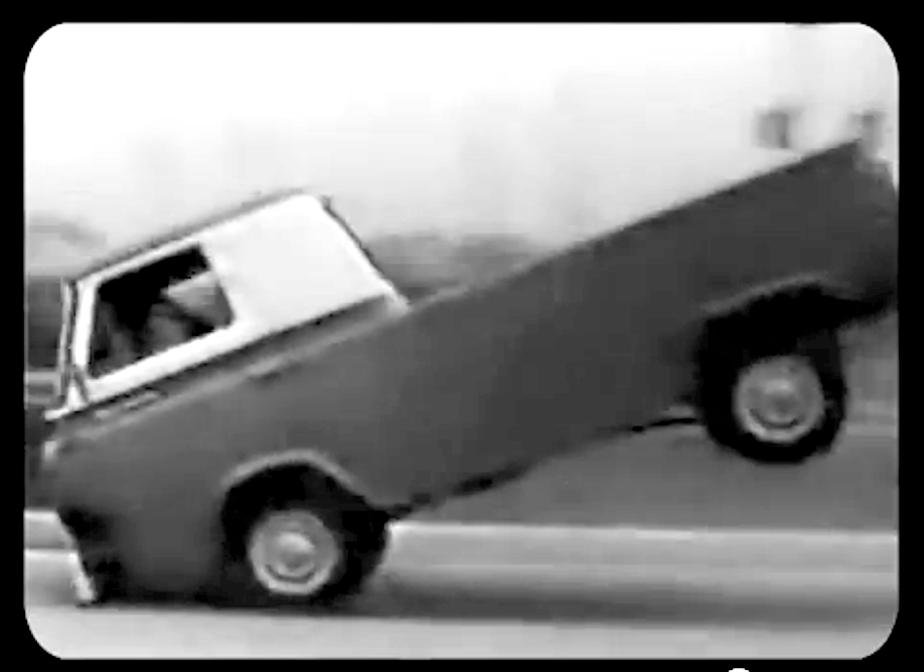
All three American manufacturers also took VW’s cue and developed pickup variants. In Ford’s case, it took the driveline from the Falcon and created a unibody van and pickup truck with an F-100 I-beam front end. With the driver’s compartment moved over that front axle, and a 7-½ foot bed, it had lots of loading space and could be made very cheaply. What could go wrong? In the case of the Econoline pickup, plenty.
Its rather unbalanced look was more than a look. Ford discovered during testing that under panic stops, the E-100 rear had a tendency to raise up. This caused the rear wheels to lose contact with the pavement. The higher the speed and harder the braking the worse it got.
The Unbalanced Econoline Pickup Becomes Balanced
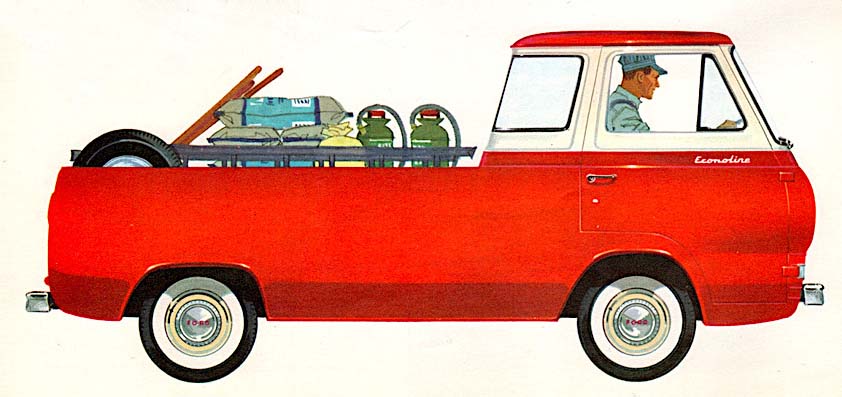
The solution was to add 165 lbs. of weight over the rear axle to counter the fulcrum effect. Not pretty, but in spite of this ugly solution the Econoline pickup had many positives. Without the need for a frame, it was cheap to build. What made it even cheaper was how little unique tooling it took to turn the van into a pickup. All of this meant it could sell for less. It also weighed only 2500 lbs. so the drivetrain strained less. Even with 165 lbs of dead weight.
Some owners discovered the added weight and removed it, not considering why it was placed there. If you’re on the hunt for an Econoline pickup, be aware that there are examples running around that this was done to. If yours is one, it would be best to install something that mimics the factory counterweight.
The Econoline Pickup Never Got A V8
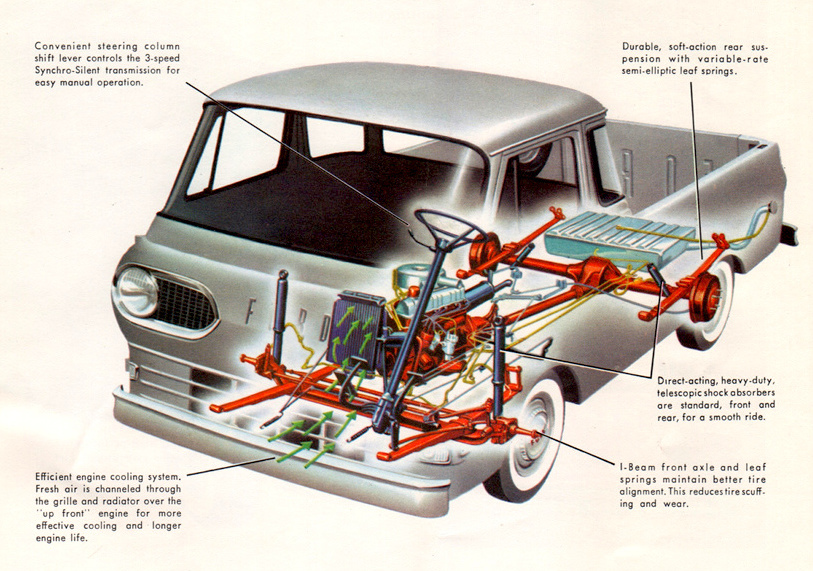
Until 1964 you could only get a three-speed manual transmission, aiding in gas mileage. A 170 ci straight-six engine was standard, with a 200 ci version as an option. A V8 was never available but has been a popular swap over the years.
A three-window and deluxe five-window version were available. Either way, it’s an oddly-proportioned truck, even with our almost 70 years of familiarity. In its day phone companies loved them. The cost, maintenance, and durability all played a big part in its appeal.
After selling over 14,000 its first-year sales started dwindling. In 1967, its last year of production, the Econoline pickup sold around 2,000 units.
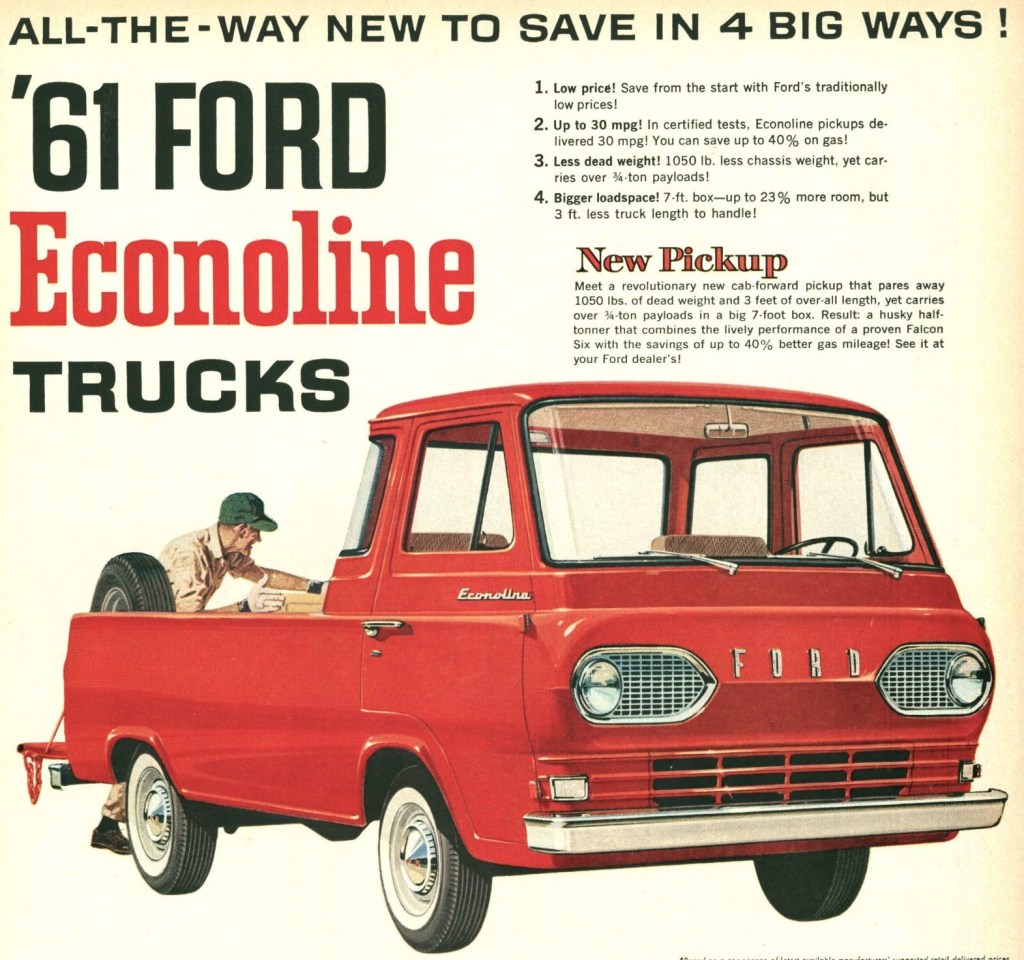
Updated 09/13/2022



